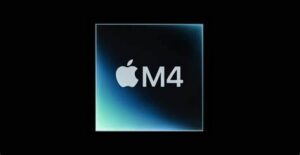A vehicle with no launch date.
- GM Cruise has launched its first autonomous vehicle which has no launch date and about which I think questionable statements were made.
- The vehicle is named Origin and is a people mover with no driver controls and can comfortably seat 4 people.
- However, no details of its range, launch date or even cost were given, leaving observers with more questions than answers.
- The statements that I think are questionable are:
- First, Capability: GM Cruise stated that the vehicle has been extensively tested and that the technology is now at a level so that it could drive from one side of the US to another without a crash.
- This statement is clearly based on disengagement data where GM Cruise ranks No.2 behind Waymo.
- This data indicates that in testing, GM Cruise was able to drive for around 3,000 miles without suffering a disengagement.
- This is all well and good within the rigidly geofenced area in San Francisco where it tests but is quite another when it comes to driving across the country.
- By rigidly geofencing the testing area, GM Cruise has reduced the data set against which it is driving making it far easier to deal with.
- Going from one side of the country to another is a data set many orders of magnitude greater in size and as a result, I am pretty sure the vehicle would badly fail to meet this standard.
- 3,000 miles going round and round in the same area are not the same as 3,000 miles from one side of the country to the other.
- Second, cost, Cost: Autonomous vehicles are currently very expensive to make.
- This is partly because lidar (which almost everyone uses) is very expensive and because the boot of the vehicle requires a lot of very expensive equipment and compute power.
- Price tags between $50,000 to $100,000 per vehicle are not uncommon.
- However, GM Cruise is claiming that this vehicle could be built for roughly half the cost of a conventional vehicle.
- In the US, this would imply a build cost of around $18,000 which is orders of magnitude away from the where the costs are presently.
- I think it is possible for this cost to be reached eventually as electric cars are simpler to build than petrol cars are today, but GM cruise seems to be implying that this is possible now.
- To reach this target, lidar would have become as cheap and common as WiFi, the electronics would have to be present on low-cost mass-produced chips and electric vehicles would need to be shipping in huge volumes.
- None of these events are even close to being on the horizon making this statement unrealistic for the foreseeable future.
- Softbank and Toyota are big investors in GM Cruise and Softbank, in particular, has been putting a lot of pressure on its portfolio companies to show progress in the wake of the WeWork disaster.
- When Softbank invested in GM Cruise, it had overly ambitious goals for rolling out autonomous driving which were substantially rolled back (as I expected) when reality came knocking on the door.
- Hence, I suspect that GM Cruise is under pressure to show something and because the technology is nowhere near commercialisation, a show car is what we got.
- Hence, I do not think that this advances in any way GM Cruise’s timetable to market and I see no reason to update my estimate for autonomous driving becoming a commercial reality.
- This estimate remains 2028 meaning that there is a lot of consolidation to come in this sector as overly ambitious targets are missed and companies run out of money.
- There will be plenty of companies to choose from when this trend really gets underway meaning that OEMs should feel no pressure to get involved now.
- Autonomous driving is a very hard problem to solve and there is a lot of pain to come before it really hits the road.









